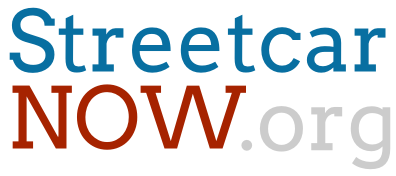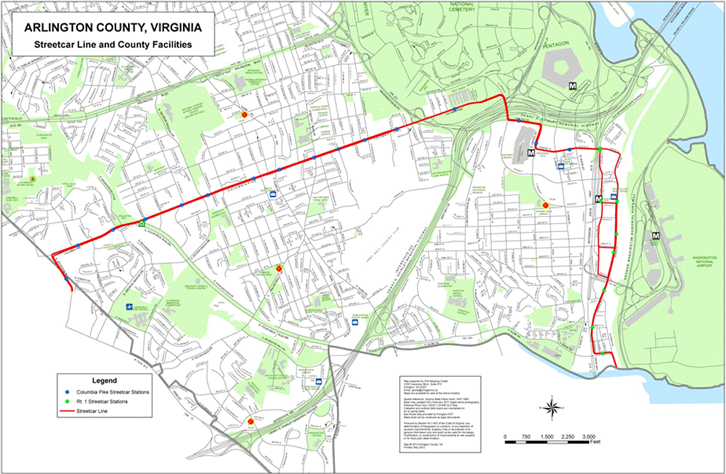The Columbia Pike Streetcar
What is the plan?
The Columbia Pike Streetcar will start in Pentagon City, travel under 395 on Joyce St, turn down Columbia Pike, follow the Pike all the way through Arlington to Jefferson St, past the shopping centers, ending at Skyline (near the Target) [here's a map]. The Modern Streetcar vehicles will operate primarily in the outside lanes (near the curb), but in some areas (primarily the far west and far east) they will use the inside (median) lanes. Those lanes will continue to be open to use by traffic - cars, buses, trucks and other vehicles will continue to use the same lanes that the Streetcar uses (though the Streetcar may have dedicated lanes for a small portion of Pentagon City).
The Columbia Pike Streetcar will replace and improve the service that the 16G buses current provide on the Pike; a streetcar will arrive every 6 minutes, even during off-peak hours. The other buses routes will continue to operate.
The Pike Streetcar is expected to seamlessly connect with the Crystal City Streetcar as depicted in this map.
The bus service on Columbia Pike is exemplary; if we need more capacity why not just add more buses?
From a capacity perspective, it’s difficult to create much more capacity with buses - at peak times buses already come every two to three minutes. Even at that frequency we already have significant problems with buses bunching up which negate many of the benefits of adding additional buses. Streetcars hold many more people than a typical bus so they can easily add capacity without changing the frequency of service.
In addition, adding capacity is not the only goal of the Pike Transit Initiative, we also want to get more people to ride and spur economic revitalization along the corridor.
Streetcars and other rail-transit options have shown time and time again that they attract significantly higher ridership than buses. Buses tend to only attract riders who have no other choice but to take public transit, while Streetcars by offering a higher quality ride also tend to attract riders who choose to take the streetcar even though they have other options. This will help relieve congestion and improve air quality along the Pike, along with many other benefits.
Streetcars are also far superior to buses when it comes to spurring economic development. Because of the permanency associated with laying tracks in the ground, developers are assured that an investment near a Streetcar route will return dividends for years to come, while an investment near a bus route may fall prey to a realignment or cessation of the bus route at anytime.
Why not just switch from our current buses to larger articulated buses?
While articulated buses can address the capacity issues on the Pike to some extent, they cannot do so as well as Streetcars. An articulated or BRT-style bus will carry 90 or 100 passengers. Portland Streetcars carry 115 passengers, longer streetcar vehicles carry as many as 186 passengers. Adding capacity is not the only goal of the Pike Transit Initiative, we also want to get more people to ride and spur economic revitalization along the corridor.
Streetcars and other rail-transit options have shown time and time again that they attract significantly higher ridership than buses. Buses tend to only attract riders who have no other choice but to take public transit, while Streetcars by offering a higher quality ride also tend to attract riders who choose to take the streetcar even though they have other options. This will help relieve congestion and improve air quality along the Pike, along with many other benefits.
Streetcars are also far superior to buses when it comes to spurring economic development. Because of the permanency associated with laying tracks in the ground, developers are assured that an investment near a Streetcar route will return dividends for years to come, while an investment near a bus route may fall prey to a realignment or cessation of the bus route at anytime.

